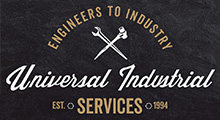Simple Steel Fabrication Definition
Steel fabrication is the process of cutting, bending, shaping, and assembling steel into structures or products needed for construction, engineering, or manufacturing projects.
It turns raw steel into usable forms like beams, columns, and frames.
Steel isn’t delivered ready to use; fabrication turns mill-produced sections (like universal beams, hollow sections, or plates) into the exact configurations projects demand.

For example, a builder extending a Victorian terrace will often require custom-fabricated RSJ beams (rolled steel joists) designed to precise load requirements – a standard off-the-shelf beam won’t cut it when you’re supporting a knocked-through open-plan layout.
What Are the Main Steps in Steel Fabrication?
- Cutting: Steel sections are sliced to size using saws, lasers, or plasma cutters.
- Bending: Machines apply pressure to curve or angle steel to specification.
- Assembly: Pieces are welded, bolted, or riveted together.
- Finishing: Surfaces are cleaned, painted, or coated to protect against corrosion.
Takeaway: Fabrication is a controlled process turning steel into finished, durable products.
What Types of Steel Fabrication Should You Know?
- Structural Steel Fabrication: For buildings — beams, columns, trusses, frames.
- Architectural Steel Fabrication: Decorative or visible parts — staircases, railings, gates.
- Industrial Steel Fabrication: Heavy-duty frameworks for machinery and large equipment.
- Custom/Bespoke Fabrication: Made-to-order items tailored to unique project needs.
Takeaway: Choose the type based on whether you need strength, aesthetics, machinery parts, or something bespoke.
Why Is Steel Fabrication Important for Your Project?
- Strength and Durability: Steel withstands high loads and tough conditions.
- Precision: Fabricated steel fits exact project specifications, reducing installation time.
- Customisation: Flexible options for different project designs and sizes.
- Compliance: Proper fabrication ensures structures meet safety standards like BS EN 1090 and CE Marking.
Takeaway: Quality fabrication means stronger, safer, and quicker builds.
How Do You Choose a Steel Fabricator?
Look for providers who offer:
- Certifications: BS EN 1090, CE Marked components.
- Experience: Proven track record in your project type (commercial, residential, industrial).
- Clear Lead Times: Firm timelines for production and delivery.
- Transparent Pricing: Full quotes with no hidden extras.
- Customer Support: Willing to advise on technical specs and design choices.
Takeaway: Trust certified, experienced fabricators who communicate clearly and quote transparently.
Key Features and Benefits to Look For
- Material Quality: High-grade, corrosion-resistant steel.
- Fabrication Accuracy: Minimises site modifications.
- Protective Coatings: For rust prevention and long-term performance.
- Delivery Options: Direct-to-site for easier logistics.
- Design Flexibility: Ability to adjust dimensions, fittings, or finishes.
Takeaway: Strong materials, precise work, and good customer service save time and money.
Common Applications for Fabricated Steel
- Building frameworks (houses, offices, warehouses)
- Extensions and loft conversions
- Garages and outbuildings
- Gates, fences, and railings
- Industrial mezzanine floors and platforms
Takeaway: Steel fabrication supports both structural and decorative construction needs.
Dream Characteristics of a Steel Fabrication Service
- Fast quoting and production.
- Materials certified to UK and European standards.
- Flexibility for small one-off jobs or large commercial projects.
- Expert guidance available at every stage.
- Strong after-sales support if adjustments or advice are needed.
Takeaway: Look for speed, flexibility, certification, and expert support when choosing.
Related Terms You Should Understand
- Welding: Joining steel parts by melting and fusing them together.
- Plasma Cutting: High-precision method using ionised gas to cut steel.
- Galvanising: Coating steel with zinc to prevent rust.
- Load-Bearing Steel: Fabricated parts designed to carry structural loads.
Takeaway: Knowing these terms speeds up supplier conversations and quote comparisons.
Trusted Sources for More Information
- Construction News — industry updates and standards.
- Grand Designs Magazine — building project inspiration.
- Self Build & Design — advice for homeowners and developers.
Takeaway: Stick to reputable publications for trustworthy steel fabrication advice.
Summary: Fast Facts
- Steel fabrication = cutting, bending, shaping, assembling steel.
- Main products = structural beams, decorative metalwork, industrial frames.
- Key features = strength, precision, customisation, compliance.
- What to check = certifications, experience, pricing clarity, turnaround times.
- Dream fabricators = fast, flexible, expert-supported, fully certified.
You know the feeling – you’re standing on-site at 7:45 AM, hands freezing around a takeaway coffee from Greggs, staring at a half-demolished wall, wondering why the steel beams you ordered are somehow “not quite right.” The lads are muttering, the site manager’s already on about delays, and you’re trying to Google “what is steel fabrication” on 4G with muddy boots sinking into the gravel. You should be swapping plans over a bacon roll, not panicking about whether that RSJ can even carry the load.
Imagine instead breezing onto site – beams measured, cut, and finished bang-on spec, signed off without a second look from Building Control, and you cracking a joke about it to the brickies instead of sweating over weld quality.
Turns out, a bit of know-how about steel fabrication – the real nuts and bolts stuff, not the Grand Designs soundbites – is what saves your project (and your Saturday mornings). Let’s make sure you’re the one buying pints at the pub, not paying for a second crane hire.
References:
https://bcsa.org.uk/product/nsss-7-ed-1-revision-book/
https://www.standardsforhighways.co.uk/tses/attachments/ac039ec2-c760-4d1a-9e12-31c075eb8dec?inline=true
https://www.lantra.co.uk/media/ci2d10i5/nhss-3-ssd-issue-5-9001_2015-final-to-lantra-february-2023.pdf
http://www.legislation.gov.uk/uksi/2015/51/contents/made



